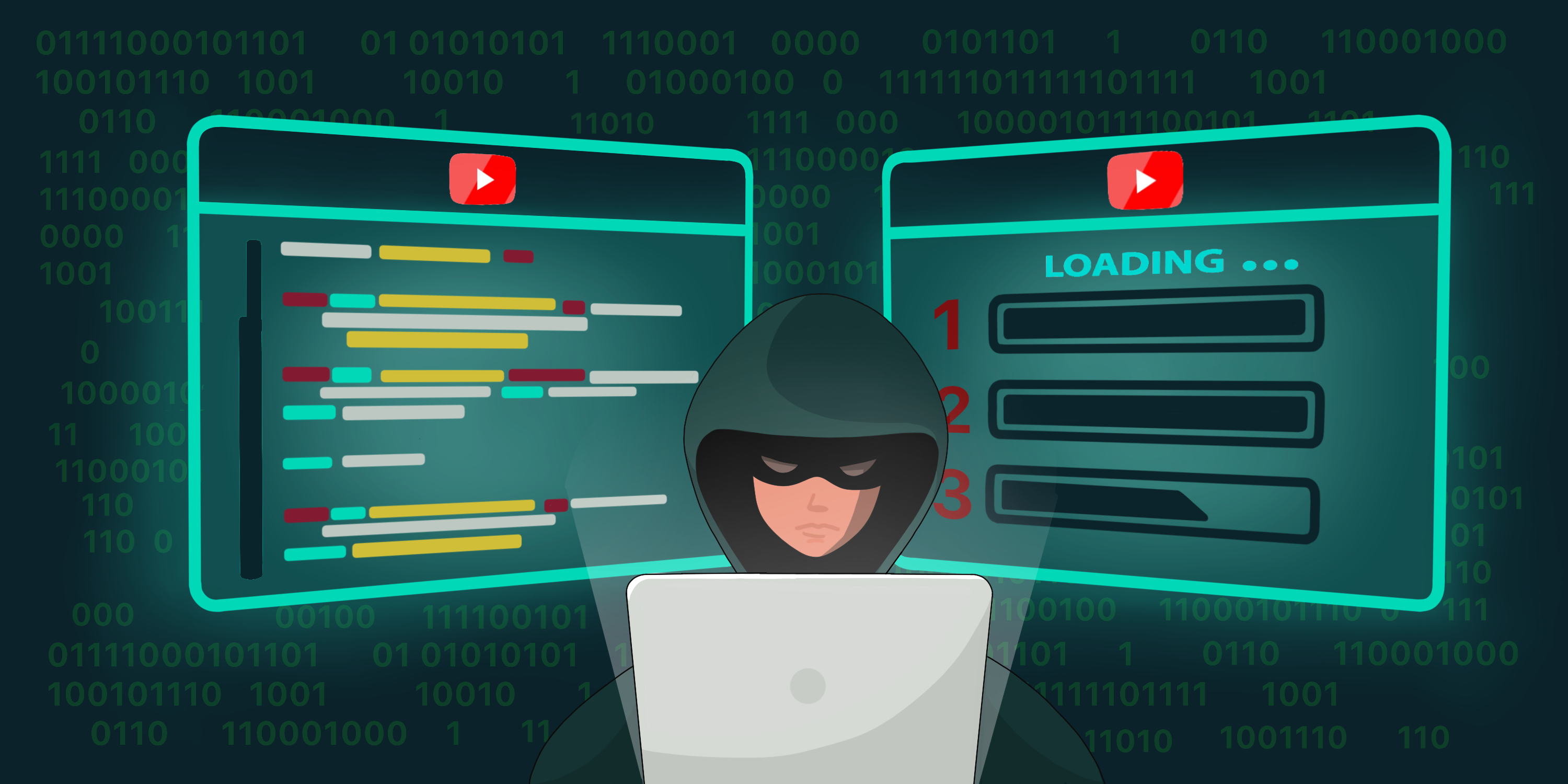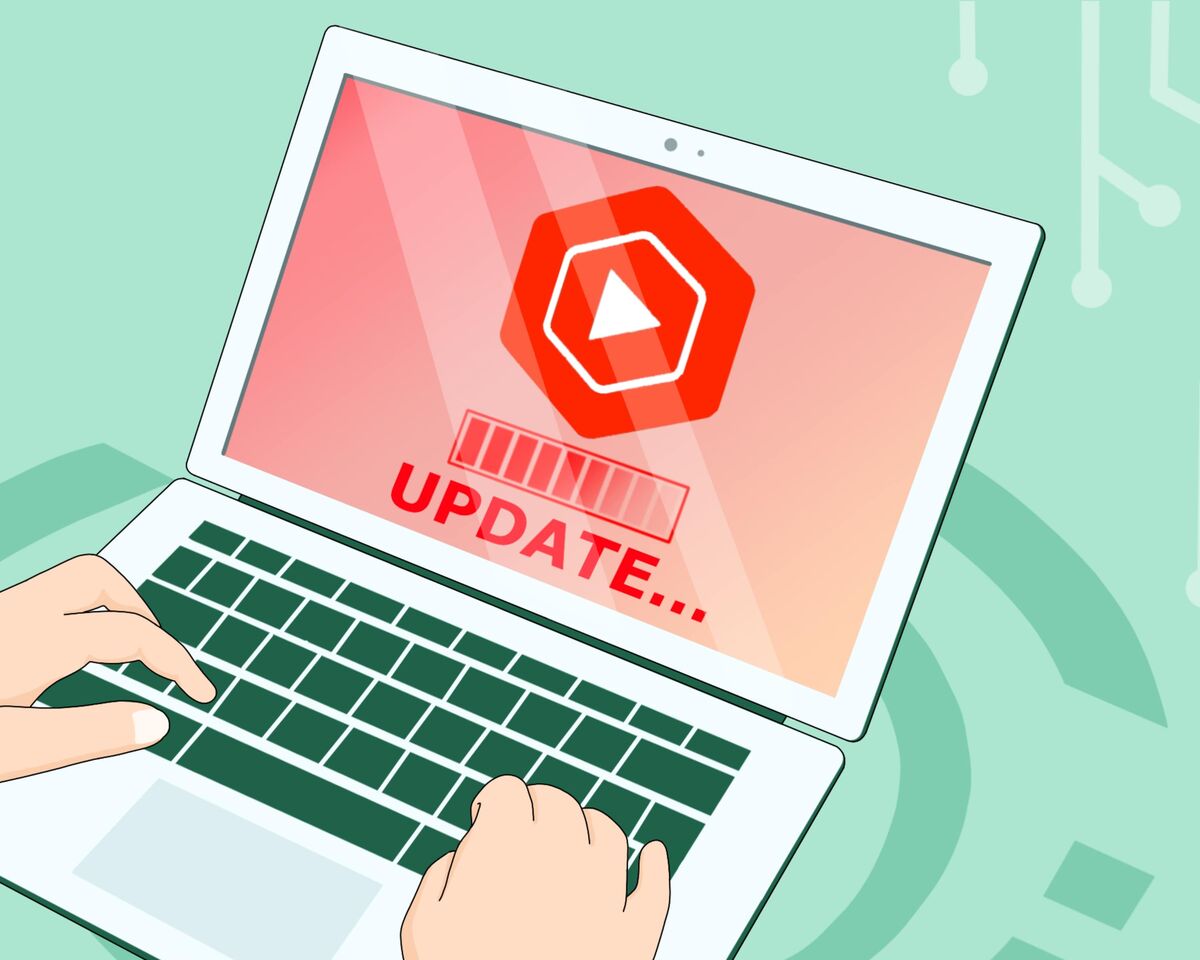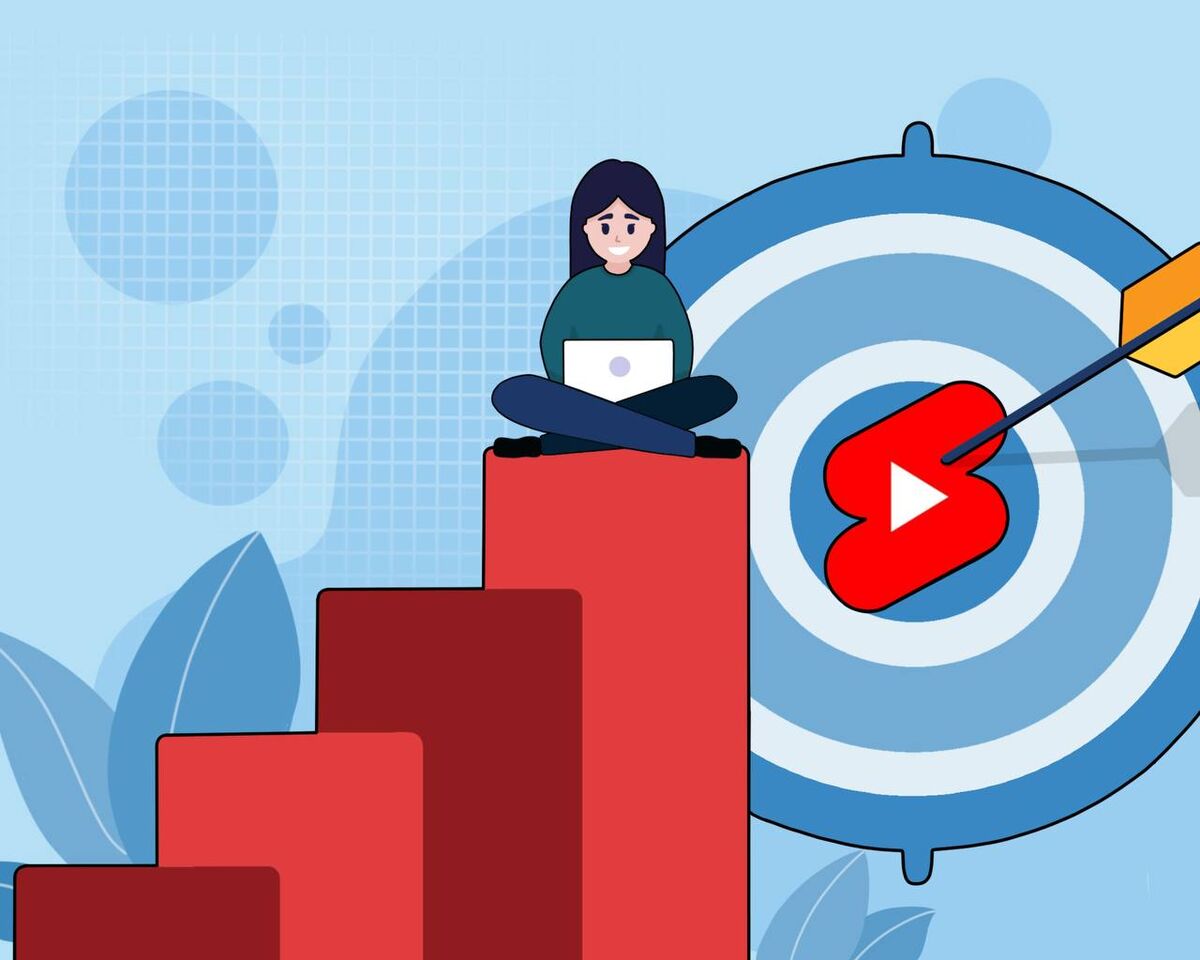3 Essential Steps to Creating a Viral YouTube Video

Clickable thumbnails, attractive video titles, dynamic editing, and even high-quality filming are important, but they won't matter in your YouTube promotion without a compelling idea at the core of the video.
Popular creators constantly create interesting content and easily capture the audience's attention because their videos are built on viral ideas.
And here's the thing: a viral idea doesn’t have to be complex.
It sounds simple, but how do you choose an idea that works? How do you find the perfect topic for a video that has the potential to go viral?
Let's set our expectations: there are no guarantees on YouTube, but there are proven strategies that can increase your chances of creating a viral video.
The Three Pillars of a Viral Video Idea
Let's consider what any artistic work consists of.
It has three important components: Topic, form, and point of view or perspective.
For example, take the topic of love—it can be expressed through various forms like a novel, poem, film, or even a painting. If we dig deeper into love in cinema, it can be portrayed in many different moods: drama, comedy, or even horror. However, countless films explore this theme, and most of them pass us by unnoticed. So, what distinguishes the films that leave a lasting impact?
The answer lies in the unique point of view through which the creator presents the theme.
Take James Cameron, for instance. He uses ordinary love stories reminiscent of "Romeo and Juliet" but sets them in extraordinary circumstances, like the sinking of the Titanic or the fictional planet Pandora, as seen in Avatar.
Now, let's bring this idea back to a more relatable context, like YouTube videos.
Let’s analyze one of the platform’s most popular creators—MrBeast. Regardless of your personal opinion about him, you can’t ignore his success. So, what can we learn from analyzing the content and ideas on MrBeast's channel?
What has he released recently in terms of topics:
- Fight for a cash prize
- Enclosed space survival
- Abandoned building exploration
- Cave survival
It doesn’t sound all that complicated, to be honest.
The topics themselves aren't new or sensational, which makes it feel even more manageable to find a good idea.
Believe it or not, the form of the content is even simpler because it's almost always the same: challenges.
Mr. Beast started doing them many years ago and still can't stop. And people can't stop watching them. He found a winning recipe for success on YouTube.
As for the point of view or perspective, it’s straightforward as well. He often focuses on the following:
- He often focuses on a constant struggle for money
- Creating an artificial time limit for completing the challenge, like “you have ten minutes to do something”—and you're already halfway there.
- MrBeast also loves using superlatives: “The deadliest obstacle course,” “The most dangerous trap in the world,” and so on.
- Lastly, he often creates a "versus" mentality, comparing things like the most expensive yacht to the cheapest one.
And when you look at the channel of the world's most popular creator, you might think that finding a viral idea is as easy as pie.
However, we can’t overlook the fact that MrBeast has a massive, loyal audience, a huge budget to bring any idea to life, and a team of professionals backing his content. With those resources, it's much easier to reach success quickly.
We don’t have access to most of these advantages. Plus, not everyone runs channels in the entertainment niche. Many of you create educational content, run vlogs, film handmade crafts, share hobbies, or talk about cooking and sports—there's a wide range of content out there.
So, how do we approach this? By developing a step-by-step guide to creating viral ideas for YouTube videos tailored to your niche.
Step 1: Developing a viral video topic
As mentioned earlier, you can produce high-quality content, but if you choose the wrong topic, it can prevent your video from reaching the number of views it deserves.
You can easily see how crucial the video topic is in creating a viral hit by looking at your own channel. Some videos perform better than others, and often the ones you didn’t expect to take off end up being the most successful, even when the quality is roughly the same across all of them.
So how do you determine if a video topic has the potential to be successful?
The first step is idea validation.
Yes, we need to find proof that the topic has potential. To do this, you'll need to analyze videos on the same topic from your competitors in the niche. However, there’s a big nuance here that many beginner creators stumble upon.
If you check your idea on the channels of large, established creators, it likely won’t help much. Why? Because of the familiarity bias—a cognitive distortion that leads people to prefer familiar creators, regardless of the topic they're covering. This bias makes viewers automatically choose videos from creators they already know and trust.
As a result, analyzing successful topics based on popular creators can be misleading because their inflated audience trust level skews the data. To avoid this bias, verify your video idea by analyzing similar videos from less popular creators.
For example, if out of ten smaller channels, only a few videos on the same topic have gained an average number of views, it's clear the topic may not be that interesting to the audience, meaning it has little viral potential.
That said, this doesn't mean you should completely avoid less popular topics. It’s essential to leave room for experimentation, and remember that not every video will go viral, even if you follow all the best practices.
On the flip side, if you don’t have a video topic in mind, smaller creators’ channels can also help you identify successful ideas. To do this, you’ll need two things: time and the VidIQ extension.
To spot viral topics, look for videos that stand out among others on smaller channels. Visit the channels you're analyzing and check these values:
- Views per hour (VPH),
- and the number of times this video has received more views than the average number of views on the channel
Try to focus on videos released in the last six months, as many topics gain popularity based on current trends. If you analyze older content, keep this nuance in mind.
Pay special attention to views per hour—this metric signals whether the topic is still trending and relevant. The higher the views per hour, the more likely viewers are still interested in that type of content.
So, the goal is to identify topics that are getting more views than average on smaller creators' channels and still remain relevant and in demand.
However, even this tactic has its own nuances:
- This kind of work takes a lot of time
- You need to learn how to use tools for analysis
However, if your topic isn’t generating significant views, consider it a red flag: it’s likely not appealing to a broad audience.
That said, if your goal is to cater to a niche audience rather than create a viral video, then this isn’t a red flag at all. In that case, go for it!
Step 2: Choosing the Video Format
To make it easier for you to understand the difference between the topic and format of a video, remember this simple rule: the topic answers the question "what," while the format answers "how."
You can choose a great topic, one that is trending on all channels, but how it’s presented is also an important part of viral content. The same topic can lead to completely different results on two different channels.
For example, let’s take the topic of relationships within the psychology niche. You’ll find all kinds of videos on this subject:
- Countless pieces of advice from psychologists of varying quality.
- Podcasts with reflections from ordinary people, with or without experts.
- Interviews and podcasts with professional psychologists.
- Various kinds of entertaining videos on the topic of relationships
- Vlogs from families to "my day with my boyfriend"
- Some “trash” content
- There is also a huge number of challenges that are tied to the topic of relationships
All of these videos cover the same topic, but in completely different formats, with view counts ranging from zero to sky-high.
The example may be general, but the key takeaway is this: the format influences virality just as much as the topic.
As you can imagine, there are many formats:
- Tutorials
This format is aimed at educating viewers and guarantees that they will gain knowledge on the given topic and solve some of their problems.
- Challenges
This is primarily an entertaining content format, focused more on emotions and providing an engaging journey through the topic for viewers.
Here’s a little secret about this format: most often, challenges become viral content. Due to the structure of their videos, which is based on viewers’ curiosity, it's easier for creators to attract an audience and keep them watching the video in its entirety.
- Vlogs
Lifestyle content, which is most often centered around the individual, can be at the heart of almost any topic. It’s a light, entertaining format built on the audience’s curiosity and desire to peek into someone else’s life, to experience a life that isn't their own.
In this format, the connection with the audience plays a huge role—the closeness between the creator and the viewers. Without it, the format won’t work.
- Interview
Since multiple people are involved here, in this type of content, aside from a good topic, the people on screen also play a role: how interesting the guest will be to the viewers and how much the audience trusts the host.
For the most part, interviews can be classified as an entertaining format with elements of informative content, but education rarely plays the main role.
- Reviews
Here, as with interviews, the focus can lean either towards education or entertainment.
There's probably no need to explain what reviews are — they are done in any niche: gadgets, real estate, cosmetics, or even baby reviews.
- Opinion or commentary on the topic
This is any content from absolutely anyone on any topic: you're free to talk about stars, whether in the sky or in show business, react to a particular show, and discuss your diets or what you think about someone’s actions or statements.
- Show
These are our favorite entertainment TV shows that have migrated from television to YouTube.
- Documentary
It's not accurate to classify documentaries as tutorials. While both aim to educate, documentaries are a distinct content format with a well-defined structure, much like feature films.
Although this structure isn't followed as rigidly on YouTube, it still plays an important role.
- Animation
Let’s note this as a separate format, but it’s important to understand that animation rarely goes viral on its own.
- The value you want to convey to your viewers.
Because it would be difficult to address complex social issues through challenges; an interview or a documentary would be more suitable here.
- Your skills and resources
You’re unlikely to manage a show right away if you don’t have experience creating this type of content and the budgets needed to implement this format.
- General style of the channel
If you run an entertainment channel filled with funny sketches, it's unlikely that a video on how to embroider would go viral. Similarly, if your channel typically features calm, relaxing vlogs, suddenly posting a harsh challenge with prank elements could confuse your audience.
Also, don’t forget to consider the current popularity of the format you choose and how frequently other creators are using it. Just like with the topic, you’ll need to rely on the experience of other creators—their view counts can indicate whether the audience is interested in that type of content right now.
However, here's an important nuance: while adopting popular formats can be useful, there's always the risk of blending into a sea of similar videos.
- You do it better than others
This crucial point about choosing the right format is often overlooked by beginners, but it’s important to keep in mind. If a viral idea has already been executed in a certain format, it’s not too difficult to analyze and figure out how to improve upon it.
And that’s perfectly fine—you can still go viral by doing this. However, success depends on one key condition: you need to make your content better than the original creator’s version
The second point is —
- Your unique presentation
This is exactly what can help beginners stand out. Yes, you can take a popular topic, like survival in the woods, present it in a challenge format, and still infuse it with your unique sense of humor that sets a special atmosphere for your audience.
And here’s a little secret: you can mix formats. For example, you can take a tutorial on how to edit in Adobe Premiere and turn it into an educational challenge—maybe assembling a video in the program within 24 hours or trying to finish the editing in just one hour.
Experiment, mix things up, stay on top of what’s relevant, and choose formats that are accessible and enjoyable for you.
At this point, we've already covered more than half of what it takes to create a viral video idea. Your topic + your format = the core idea. Now, there’s just one last and most important step left:
Step 3: Finding a Unique Angle
This is the key ingredient in our secret-sauce for creating a viral YouTube video.
To help you find that unique angle, here are some templates you can use to spark ideas for your videos:
- Money
The biggest pain point, problem, and trigger for most viewers is the money issue.
If you're teaching editing, you can consider showcasing the type of editing that is most in demand among clients.
Or maybe you have a vlog where you share your secrets to financial literacy, or like Mr. Beast, you constantly organize challenges with cash prizes.
Any topic related to earning money or clearly defined attractive amounts is more likely to go viral. Otherwise, info-gypsies and their so-called very wealthy lives and success secrets would have disappeared from all social media a long time ago.
- Time
Are you teaching any skills within a limited timeframe, such as how to learn Spanish in three months, or summarizing a year’s progress on a gaming channel in GTA Online? Time is a very appealing angle for viewers.
Viewers always want to learn something as quickly as possible or find out if something is worth it based on the experiences of others.
- Lists
Top 10, 12 best, 8 worst, and so on.
When you do the extra work for the viewer by organizing the information, believe me, they will be grateful. This works with virtually any topic and in any format:
- Top 5 free editing software programs, where you help people solve the pressing issue of choosing software, preferably at no cost.
- Or maybe you’re addressing an important question: what to watch tonight, and you provide a list of 10 great movies for the evening.
- Comparisons and contrasts.
You could create a simple tutorial on how to make a paper crane, or take it up a notch with a challenge where you make the same crane using both expensive and cheap paper. While a straightforward tutorial might become a useful, evergreen video that answers a specific question, a challenge involving comparison has a much higher chance of going viral.
Comparisons and contrasts work exceptionally well in vlog formats, challenges, reviews, tutorials, and can fit into many content areas. The key is bringing everything together in a way that’s genuinely engaging for your audience.
- Transformation
People tend to desire more, start new lives, lose weight, change habits, and so on.
Transformations of any kind attract attention.
You can talk about sports and healthy eating, and that would make for a great evergreen video, or you can showcase your own body transformation and create something viral.
You could set up a challenge where you undergo a transformation yourself, or perhaps you’re turning a bucket car into something unique and decided to share that journey. In any case, remember to consider the topic, format, and how all of this fits into your channel's style.
- High stakes and big risks
If you’re just traveling around the world, that’s one thing, but if you’re surviving on a deserted island, that’s something completely different. Or, for example, if you have only $100 in your pocket to survive in a new country for two days.
The higher the stakes in the video, the more interesting it will be for viewers to see how well you handle various obstacles along the way.
Once again, our ever-present Mr. Beast constantly utilizes this angle in his video themes: stop a train or it will crush an expensive car, save a yacht and keep it for yourself, or if you don't escape from the room, you'll explode in it.
- The superlative angle.
Using superlatives—such as the worst and best, the cheapest and most expensive, the biggest and smallest—always enhances the emotional connection between the viewer and your video's topic and format. These extremes grab attention and make your content more compelling and memorable.
- A topic from an unexpected angle.
We have many stereotypes in our heads that have settled in so well that they are perceived as absolute truths. Therefore, when we see a familiar topic that resonates with us but from a completely unexpected angle, it raises a lot of questions. And, of course, curiosity.
You’d probably agree that the statement "friends are unnecessary" sounds provocative, right? It's a bold, ambiguous statement that grabs attention and encourages viewers to engage in discussions in the comments. This type of controversy can help push your video forward and potentially turn a simple clip into a viral sensation.
- A comprehensive approach.
A complete guide, step-by-step instructions, all methods of promotion or earning, answers to all questions, or all facts about something — all of this helps viewers avoid searching for information on their topic piece by piece on the internet, and instead receive a comprehensive collection from the author.
And as you might expect, there are countless angles and perspectives to explore. We’ve highlighted some of the most popular and straightforward ones that you can start applying to your content right away.
Now, let’s quickly recap the steps to creating a viral video:
- Choose and validate the topic.
- Find a suitable format or formats.
- Create a unique angle or angles for your main idea.
There’s just one question left:
How to Verify That Your Idea is Good?
Here’s a simple guide to help you evaluate what you’ve come up with.
Evaluate the feasibility of the idea.
You can come up with anything, but you need to objectively assess your resources for implementation: money, time, and effort.
- Explore new audience interests
You have your subscribers, there are viewers all over the world, and then there’s your potential audience who hasn't yet stumbled upon your channel. And right now, we’re specifically talking about that new audience.
It’s important for us to determine the interest in the proposed video among viewers who don’t know you yet. Consider whether they would want to watch all your content on the channel after this video.
- Check the existing interests of the audience.
Will these topics, format, and angle be relevant to the majority of your regular viewers?
- Evaluate the potential for views.
Is the topic broad enough, and are there views in this category at all? If you’ve done a good job on the topic in the first stage, you already know the answers to these questions. But if you’re taking a risk and choosing a niche topic, it can be challenging to verify.
- Does the idea fit the style of your channel?
You shouldn’t forget that your channel already has a specific niche, style, and format. If you’re creating vlog content, there are certain topics and formats that simply won’t fit, regardless of the circumstances.
- Can you come up with a really cool thumbnail and title for this video?
If you realize that it's impossible to come up with a captivating thumbnail for a viral video, then that idea cannot become viral.
To avoid getting lost in an endless number of ideas, make a list and rate them:
- How engaging the idea is for you personally.
- How much effort will be required for implementation.
- How confident you are in the potential effectiveness of the idea.
Choose the idea that suits you best at this moment. If you’re low on energy, go for the simpler ideas. But if you're feeling enthusiastic and ready for a challenge, take some risks and experiment.
However, keep in mind that not every idea or video needs to go viral, and that’s okay. It’s perfectly fine if something doesn’t work out—just focus on doing what you enjoy.
We’ve approached this topic thoroughly to help reduce risks and increase your chances of success. But remember, those who take risks are often the ones who soar. And before they reach success, they may fail many times along the way.
Failures are just as important as successes. There’s no perfect formula, and even YouTube can’t guarantee results. Setbacks are inevitable, but that’s part of the journey. So let’s go for it—we believe in you




